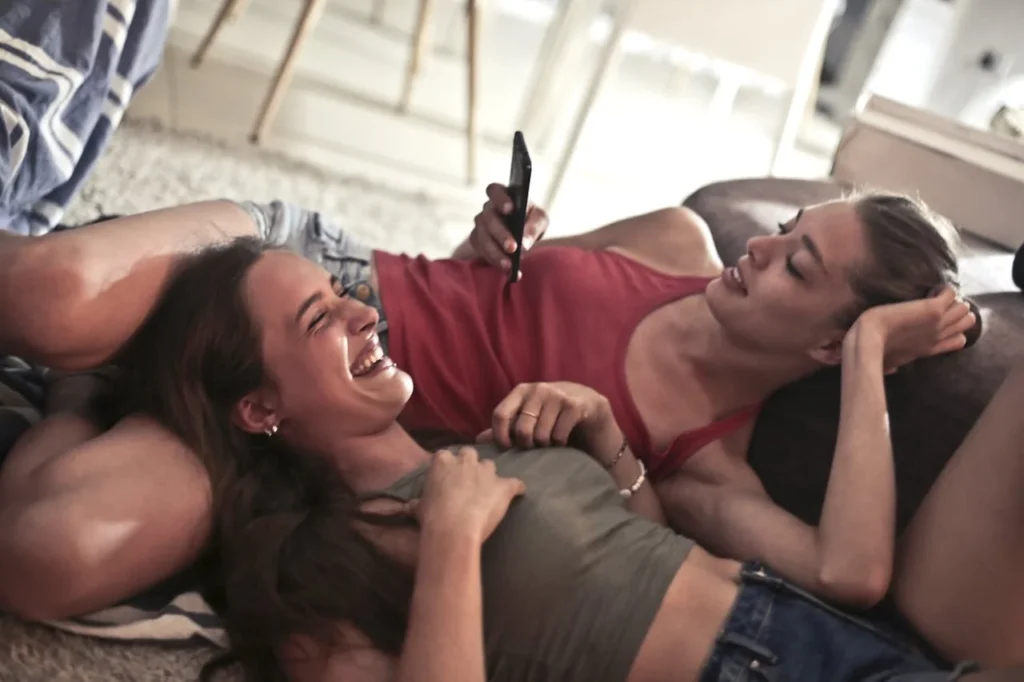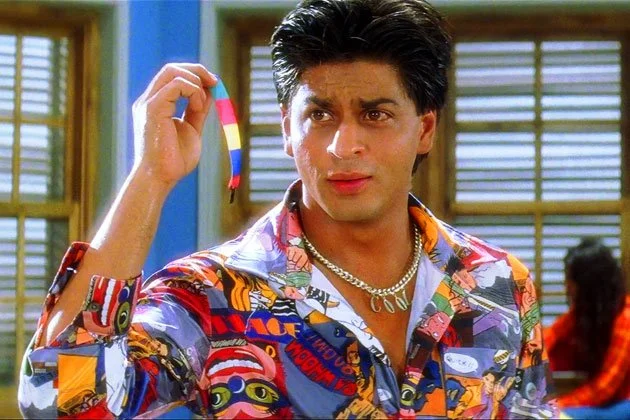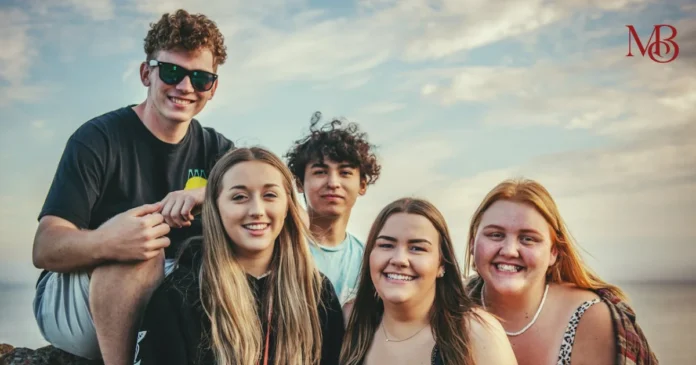Ever wondered why We Celebrate Friendship Day? I did, and it all started with a text message.
Last year, on an otherwise ordinary August morning, I got a message from my childhood friend: “Happy Friendship Day, idiot.” No emoji. No GIF. Just that one line.
But I smiled anyway.
We hadn’t spoken in months. Life had pulled us into different cities, jobs, and time zones.
And yet, that tiny message blunt and familiar felt like a thread pulled tight, reminding me that some bonds, even when stretched, don’t break.
But it also got me thinking: Why do we actually celebrate International Friendship Day? Is it just a trend for social media, or does it go deeper than that?
Let’s walk back a little and explore the roots, emotions, and cultural resonance of this day because behind the hashtags and wristbands lies a global story stitched with hope, healing, and humanity.

When the World Chose Friendship Over War
Did you know that the idea of a “Friendship Day” first began in 1930s America?
Yes, it was initially proposed by Joyce Hall, the founder of Hallmark Cards, as a day to send cards and express gratitude to friends. But the concept didn’t gain much traction, perhaps it felt too commercial, too soon.
It wasn’t until decades later, in 2011, that the United Nations officially recognised July 30 as
International Friendship Day, emphasising the power of friendship in building bridges between communities, nations, and ideologies.
Think about that for a moment: an international day… not to celebrate power or politics, but friendship.
Why?
Because in a world fractured by conflict and cultural division, the simple act of being a friend of reaching out, listening, forgiving, and remembering is a quiet form of resistance. It is the soft power that holds civilisations together.
Buy your friendship band here: Trending Friendship Bands
From Indian Hostels to Global Movements: How and Why We Celebrate Friendship Day in India
In India, Friendship Day has a life of its own.
Remember those colourful friendship bands from school? The race to tie them before someone else did? The playful possessiveness “I gave you the best one!” and the makeshift tattoos made of sketch pens?
That wasn’t just play. That was cultural bonding in motion.
In colleges, especially hostel campuses, Friendship Day is almost like a mini festival. Songs are sung, hands are inked, mess food is ignored for late-night Maggi parties, and old grudges are forgotten at least for a day.
These small, seemingly trivial acts are actually expressions of something deep-rooted: our collective need to belong, to connect, to be remembered.
In fact, India’s celebration of Friendship Day often spills over from the official UN date of July 30 to the first Sunday of August, which has become the de-facto Indian version thanks largely to pop culture and Bollywood (more on that soon).

More Than Just Memories: The Healing Power of Friendship
Why we celebrate Friendship Day for real? This isn’t just nostalgic; it’s necessary.
A 2023 study by Harvard revealed that people with strong social ties live longer, handle stress better, and even heal faster. Our bodies, it turns out, are wired for connection.
Think about your own life.
Was it a friend who talked you down from a panic attack before your exam? Was it someone who quietly showed up when you lost a loved one, saying nothing, but being everything?
Or maybe it was the friend you fought with, broke away from, and yet, five years later, reconnected with only to discover that the laughter still fit like a well-worn kurta.
These are not random emotional events. They are biological, psychological, and cultural necessities. And International Friendship Day, in its truest sense, is a global reminder to honour that truth.
Bollywood, Bracelets & Belonging: How Pop Culture Shaped India’s Friendship Day
Let’s not pretend we didn’t learn half our emotional vocabulary from Bollywood.
From Dil Chahta Hai and Zindagi Na Milegi Dobara to Kuch Kuch Hota Hai and Rang De Basanti, Indian cinema has shaped our understanding of friendship not as a side plot, but often as the main story.
The visuals stick: riding bikes under open skies, fighting over petty things, crying over deep ones, and always, always coming back to each other.

Bollywood gave us characters who mirrored our own relationships: messy, meaningful, complicated, and yet essential.
And so, when we see Friendship Day posts on Instagram quotes, throwback reels, those nostalgic collages, we’re not just seeing a social trend. We’re witnessing a cultural echo.
Friendship Day isn’t a Western import in India. We’ve made it our own, infused it with colour, drama, and most importantly, emotion.
The Sound, Smell, and Feel of Friendship
Close your eyes for a second and think of your best friend and think why we celebrate Friendship Day.
Now, think of the sound of their laughter as annoying, maybe. Too loud. But unforgettable.
Think of that one dish you always ate together, maybe pani puri on a summer evening, or chai with Parle-G on the last day of school.
Feel that first hug after a long fight. The tight grip. The silent forgiveness. The goosebumps.
That’s what friendship is. Not perfect. But palpable.
And that’s why we celebrate it. Because in a chaotic, often impersonal world, these sensory memories ground us. They remind us we’re not alone.
Quick Cultural Facts: International Friendship Day
- Origin: Proposed in the U.S. in 1930 by Joyce Hall, made official by the UN in 2011.
- UN Date: Celebrated globally on July 30.
- India’s Celebration: Popularly observed on the first Sunday of August.
- Friendship Bands: A tradition rooted in school and college culture in India, symbolizing emotional ties.
- Symbolic Colors: Yellow is often associated with friendship in both Western and Indian cultures.
So, Why Do We Celebrate Friendship Day?
Because we need it.
Not just for the friends we have, but for the bridges we’re yet to build.
Because nations that play cricket together sometimes talk peace. Because strangers on a train can become friends for life. Because sometimes, your enemy becomes your best friend, and those stories? They change lives.

International Friendship Day is not just about nostalgia or fun. It’s about acknowledging the relationships that anchor us, that teach us empathy, forgiveness and resilience.
In an age of digital overload and performative connections, Friendship Day asks us to pause, reach out, remember, and reconnect with people, with cultures, with our better selves.
Trust me, you need this: Friendship Day: Wishes and Quotes
A Final Reflection: Why We Celebrate Friendship Day and Who Do You Owe a Message?
So here’s a thought.
After reading this, who came to mind?
An old school friend you drifted away from? That college roommate who knew your weird food habits? That one colleague who sat with you on your worst day at work?
Message them.
You don’t need a band, a bouquet, or a photo collage. Just a simple “Hey, remember this?” could be the thread that sews an old patch back on the fabric of your life.
Celebrate Friendship Day not because the calendar says so, but because your heart does.
FAQs: Friendship Day
Q1. When is International Friendship Day celebrated in India?
India observes it on the first Sunday of August, though globally it falls on July 30 as declared by the UN.
Q2. What is the origin of Friendship Day?
Friendship Day was first proposed in the U.S. in the 1930s, and officially recognized by the United Nations in 2011 to promote peace and bridge-building among communities.
Q3. Why do people tie friendship bands?
In Indian schools and colleges, friendship bands are tied as a symbolic gesture of love, loyalty, and remembrance between friends.
Q4. Is Friendship Day celebrated globally?
Yes, countries across Asia, South America, and parts of Europe celebrate it, though the date and customs vary by culture.
Q5. How can I celebrate Friendship Day meaningfully?
Reach out to old friends, write a heartfelt note, revisit shared memories, or simply spend time together online or in person.


